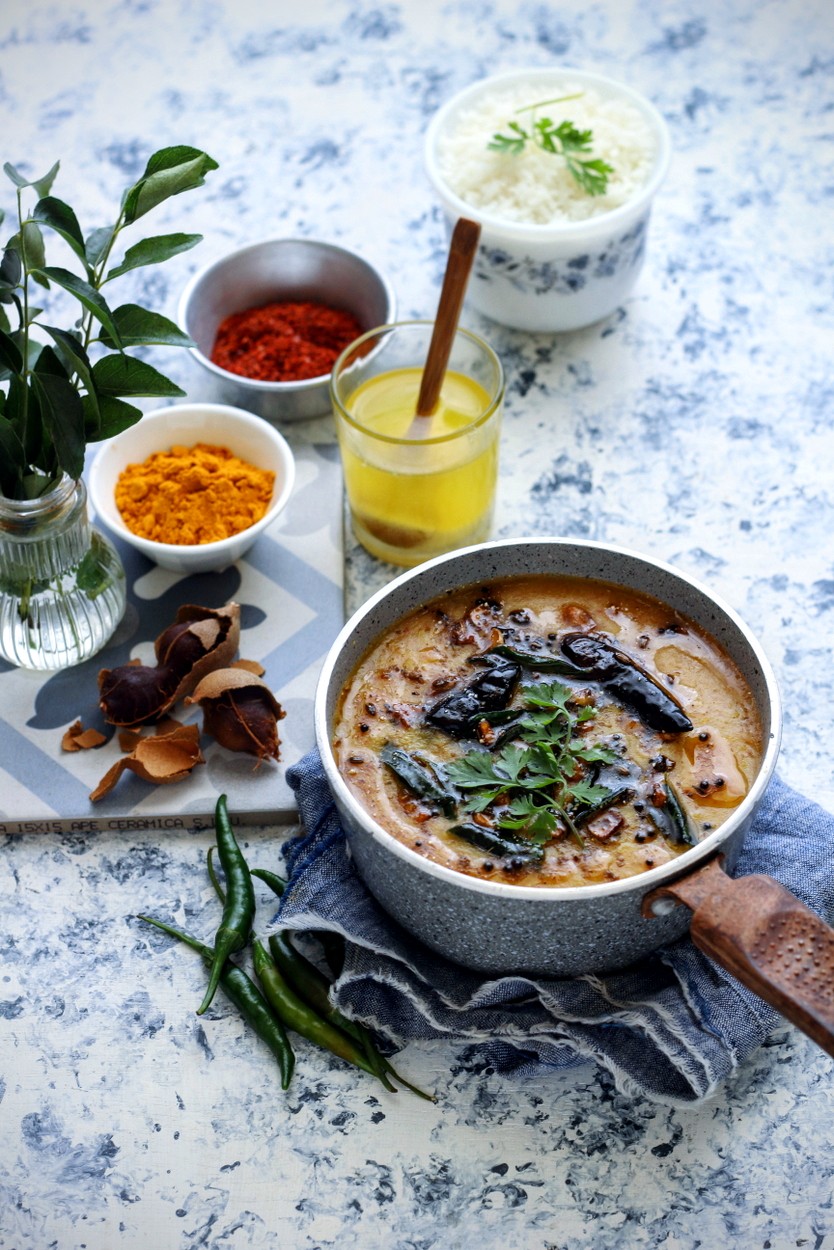Hyderabad has so much to offer not just in the terms of history but also food. Being the city of the Nizam, you should not be surprised since the last Nizam was once the richest man in the world. Many of the popular and well-known dishes that we enjoy today were created by the chefs in the royal kitchens of the palace. It is believed that the Nizam had forty nine types of biryani cooked in his kitchen. The cuisine is rich in every which way.
Some of the most well known dishes include the Hyderabadi Biryani, of course, Gil-e-Firdaus, (milk and bottlegourd pudding), Khubani ka Meetha (a dessert made with stewed apricots), Sheermal (a slightly sweet, leavened bread like naan) which is perfect for spicy and hot curries, Double ka Meetha (a kind of bread pudding), Burani Raita (garlicky raita), Haleem (meat cooked with cracked wheat), Lukhmi (which is stuffed puff pastry dough), Dalcha (a meat and lentil preparation), Bhagare Baingan (eggplants stuffed with peanut and coconut mix), Pathar ka Gosht (meat cooked over hot stone slabs), Badam ki Ashrafi (almond dessert), several kinds of korma dishes and so much more than I can write in here. Read here, a very interesting anecdote about the first Nizam and how the kulcha became his official emblem.
I am however, sharing a simple, gluten free and delicious comforting bowl of lentil preparation called khatti dal. Khatti is Hindi word for sour. And Dal is generic name for any kind of lentil curry. If you happen to love garlic in your curries, this dal is just the thing for you. It is sour and spicy with delightful hits of garlic, fried in ghee. Pure bliss Although I can have this dal on any day of the year but it’s the kind dish that is best enjoyed on a rainy day or chilly winter evening.
What I find most interesting about this dish is that unlike the north Indian dal preparation, where onion is an integral part of the tempering, Hyderabadi version does not use onions. The prominent element in the tempering here are whole red chilies and garlic. Beautifully fried red chillies and mustard seeds lend a lovely smokiness to the dish and the garlic just wraps it up all together. The khatta or the tangy part is delivered by tamarind and tamarind specifically. No other souring agent would do justice to the dal if you swap it for something else.
Another notable thing about this dal is that unlike other preparations, this one has a smooth texture almost like a sambar but smoother and thicker. In fact the dal is either passed through a sieve or rigorously mashed using a desi churner called madhani/ ghotni for a fine consistency before tempering is added to it.
There will be more regional recipes coming up this year on the blog. So stay tuned 🙂
FOR DAL
½ C Toor Dal (Toovar Dal/ Arhar Dal)
2 C Water
½ tsp Ginger Garlic Paste
4 – 6 Curry Leaves (depending on size)
100 gm ripe Tomato (pureed in a blender or finely chopped)
¼ tsp Turmeric Powder
¼ tsp Red Chili Powder (adjust heat to taste)
Salt to taste
3 Green Chilies
½ tsp Coriander Powder
2 tsp – 1 tbsp Tamarind Paste (freshly made)
FOR TEMPERING
2 – 3 tsp Ghee
3 – 4 Dry Whole Red Chilies (each broken in two)
½ tsp Cumin Seeds
½ tsp Mustard Seeds
¼ tsp Asafoetida
1 tbsp chopped Garlic
1 sprig Curry Leaves (washed and pat–dried)
1 tbsp Fresh Coriander (for garnish)
In a bowl, wash the dal at least twice and discard water. Add water again and soak the dal for half an hour.
Transfer the dal to the pressure cooker and add one and a half cup of water along with ginger garlic paste, curry leaves, tomato, turmeric powder, red chili powder and salt to taste.
Pressure cook on medium heat till four pressure whistles are released by the pressure cooker. Allow the pressure to release on its own.
Once the pressure has released, open the lid and blend the dal using a hand blender or using a whisk. Another option is to pass it through a sieve. (the idea is to achieve a smooth consistency of dal)
Once done, add green chilies (if you like more heat, add them chopped or else break them two and add to the dal), coriander powder and tamarind paste.
Add half a cup of water and cook the dal for another five to seven minutes. Once desired consistency has reached, switch off the heat and prepare the tempering.
In a small frying pan, heat the ghee (on medium heat). Add whole red chillies and fry them till they become aromatic.
Now, add cumin and mustard seeds and allow them to crackle. Add asafoetida and fry for ten seconds and then add garlic. Fry the contents till the garlic becomes aromatic and turns golden. Add curry leaves. Be careful ass the leaves might splutter oil. Switch off the heat and add the tempering to the dal. Stir well and add fresh coriander.
Serve hot with rice or with chapatti.
Note – Feel free to add half a teaspoon of jaggery powder to counter the tangy notes of the dal.
Note – The amount of chilies will depend on the heat of chilies you are using.
Note – Similarly, the amount of tamarind will depend on the strength of the tamarind. Start by using minimum mentioned amount, then taste and adjust the amount as required.
Serves – 2
Thank you so much for your visit and see you soon again with another exciting recipe!







So creamy, flavoursome and tasty….this is a perfectly healthy and satisfying meal!
This dal looks lovely, and I really appreciate all the information about it! It’s as interesting to read about as I’m sure it is to eat!